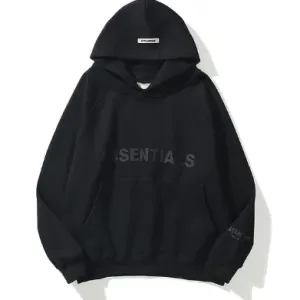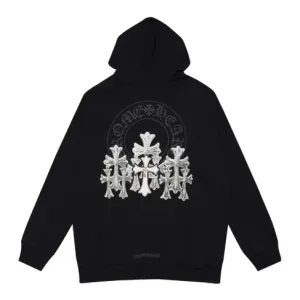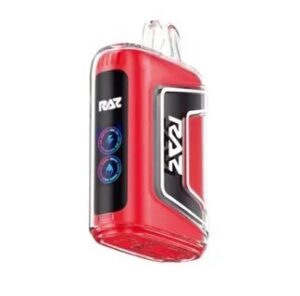Corporate events are integral to a business’s marketing strategy, internal culture, and relationship-building efforts. Whether it’s an annual conference, a product launch, an employee awards ceremony, or a networking event, capturing these moments with the right media is essential. But when it comes to documenting a corporate event, businesses often face the question: is videography or photography more important? The answer isn’t as straightforward as it may seem, as both offer distinct advantages and cater to different aspects of event documentation. The best portrait photographer in Dubai can help capture impactful, professional images that convey the atmosphere and key moments of your event. In this article, we will explore the benefits of both photography and videography in the context of corporate events, helping you understand which medium may be more appropriate depending on the goals of your event.
The Role of Photography in Corporate Events
Capturing Key Moments
Photography is often the preferred choice when you want to capture the most significant moments of a corporate event in a single, impactful frame. Photographs are excellent at freezing moments in time, whether it’s a keynote speaker’s powerful expression, an award recipient’s moment of glory, or a candid shot of attendees networking and enjoying the event.
In a corporate setting, photographs are often used in company newsletters, annual reports, social media posts, and promotional materials. Their timeless nature makes them suitable for various platforms, and they can effectively convey the tone and atmosphere of the event in a few powerful images.
Versatility and Ease of Distribution
A major advantage of photography is its versatility and ease of distribution. High-quality photographs can be quickly shared across social media, email newsletters, and company websites, and they remain highly accessible across various digital platforms. Whether you’re printing a brochure or sharing images online, photographs adapt to multiple uses.
Moreover, photography often allows for a quicker turnaround compared to video. Event planners can get images immediately following the event, allowing for fast sharing with key stakeholders or marketing teams.
Creating Lasting Impressions
While photographs capture moments, they also help preserve memories. These images, when captured by an experienced corporate photographer, are not only valuable for the present but also serve as historical records of the company’s growth and events over time.
The Role of Videography in Corporate Events
Immersing the Audience
Videography, on the other hand, has a powerful way of immersing the viewer into the atmosphere of the event. A well-produced video captures not only the visuals but also the sound, movement, and ambiance. This can be especially impactful for corporate events such as conferences, product launches, or interviews.
A video can tell a story, beginning with establishing shots, proceeding through key moments, and capturing reactions and speeches. This sense of movement and sound enables videography to convey emotions and atmospheres in a more dynamic and engaging manner than a single photograph can.
Showcasing Detailed Interactions
Videography is often better suited for capturing interactions between people, whether it’s a panel discussion, a workshop, or an award presentation. It captures the nuances of human emotion—body language, facial expressions, and the flow of conversation—which can sometimes be difficult to convey in a still photo.
Videos also allow you to include testimonials from attendees, interviews with key speakers, or behind-the-scenes footage, offering a comprehensive, all-encompassing view of the event. These elements work together to create a rich narrative that photography can’t always provide.
Long-Term Engagement and Reusability
Videos are an excellent resource for businesses to repurpose in various marketing campaigns. Whether you’re promoting future corporate events, showcasing your company culture, or building brand awareness, videos offer versatile content that can be used in email marketing, social media campaigns, and on the company website.
A well-edited video, especially one with engaging visuals and sound, can continue to draw attention long after the event is over, keeping your brand in front of your audience for a more extended period.
Photography vs. Videography: When to Choose Each
The choice between photography and videography often depends on the objectives of the corporate event and how the content will be used afterward.
When to Choose Photography
- For Static, Iconic Moments: If your event involves moments that are significant but short-lived, photography will capture those moments in high detail. These could be moments like a keynote speaker’s opening lines, an award ceremony, or team-building activities.
- For Social Media and Print Marketing: Photography is often more accessible for social media posts and promotional material. A single photograph can be used across various platforms, printed for brochures, and easily shared across multiple channels.
- When Budget and Time Are Limited: Photography is typically less expensive and quicker to produce. If you need content quickly after an event, photographs are often the more feasible option.
When to Choose Videography
- For Immersive Event Documentation: If you want to capture the full experience, including sound and movement, videography is your best option. Videos are better suited for events with dynamic content, such as speeches, panel discussions, or live product demos.
- For Internal Use or Employee Engagement: If the goal is to document the internal culture, employee reactions, or behind-the-scenes activity, videography offers a more comprehensive and engaging look at the event.
- For Long-Term Marketing Assets: Videos are versatile and can be repurposed in various ways for future campaigns. If your goal is to create content that can continue to work for your brand long after the event, videography should be your focus.
Combining Photography and Videography for Maximum Impact
In many cases, the ideal solution is to incorporate both photography and videography. Each medium complements the other and can be used together to create a complete, multifaceted record of your corporate event. For example:
- Photos can be used for quick social media posts, articles, and press releases, while videos can be shared as highlight reels or detailed event recaps.
- Photographs can provide sharp, iconic shots, while video can help showcase the event’s vibe and energy.
- Videos capture the movement and flow of the event, while photographs capture moments of stillness and importance.
By using both mediums strategically, you can create a comprehensive and engaging representation of your corporate event that meets various needs and goals.
Conclusion
So, is videography or photography more important for corporate events? The answer depends on what you aim to achieve with your documentation. Photography excels in capturing key moments, providing versatility, and creating iconic imagery for social media and marketing. Videography, on the other hand, offers a more immersive, narrative-driven way to experience an event, making it perfect for storytelling and long-term engagement.
Ultimately, both mediums have their place in the corporate event documentation strategy. The best approach is often to combine the strengths of both, allowing for a complete and compelling portrayal of the event that resonates with your audience for years to come.
FAQs
1. Can I use only one medium for corporate events, or should I invest in both photography and videography?
It depends on your objectives. If you only need content for quick promotional purposes, photography may be enough. However, if you want a comprehensive view of the event, both photography and videography are recommended.
2. How much should I budget for photography and videography at a corporate event?
The budget depends on factors like the size of the event, location, and the expertise of the professionals you hire. On average, expect to spend more on videography due to the additional equipment and editing involved.
3. How long after the event will I receive the final photos and videos?
This depends on the scope of the project. Typically, photographs can be delivered within a few days, while videos may take several weeks to edit and finalize, especially for larger events. It’s important to discuss timelines with your photographer or videographer beforehand.








